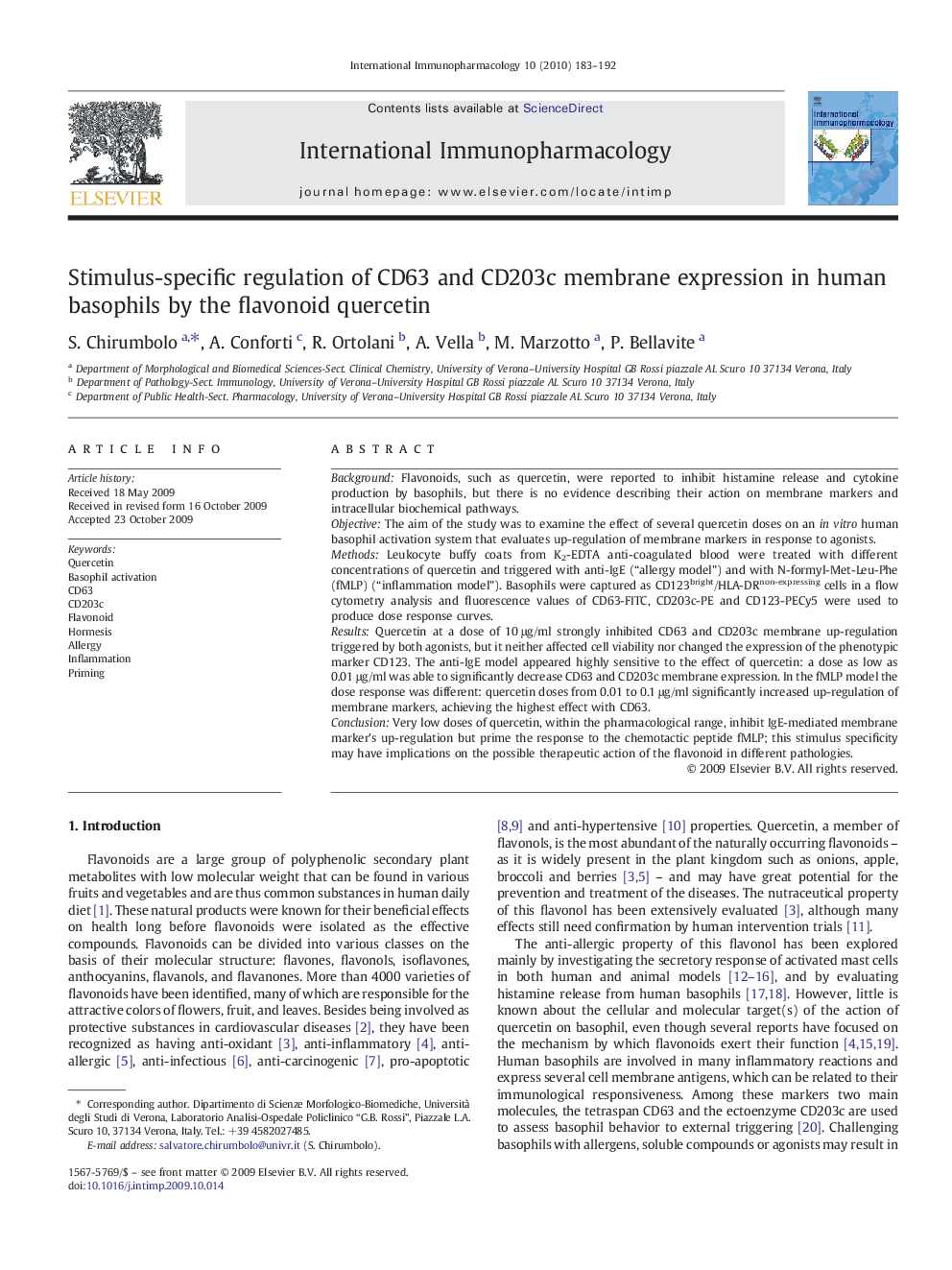| Article ID | Journal | Published Year | Pages | File Type |
|---|---|---|---|---|
| 2541640 | International Immunopharmacology | 2010 | 10 Pages |
BackgroundFlavonoids, such as quercetin, were reported to inhibit histamine release and cytokine production by basophils, but there is no evidence describing their action on membrane markers and intracellular biochemical pathways.ObjectiveThe aim of the study was to examine the effect of several quercetin doses on an in vitro human basophil activation system that evaluates up-regulation of membrane markers in response to agonists.MethodsLeukocyte buffy coats from K2-EDTA anti-coagulated blood were treated with different concentrations of quercetin and triggered with anti-IgE (“allergy model”) and with N-formyl-Met-Leu-Phe (fMLP) (“inflammation model”). Basophils were captured as CD123bright/HLA-DRnon-expressing cells in a flow cytometry analysis and fluorescence values of CD63-FITC, CD203c-PE and CD123-PECy5 were used to produce dose response curves.ResultsQuercetin at a dose of 10 μg/ml strongly inhibited CD63 and CD203c membrane up-regulation triggered by both agonists, but it neither affected cell viability nor changed the expression of the phenotypic marker CD123. The anti-IgE model appeared highly sensitive to the effect of quercetin: a dose as low as 0.01 μg/ml was able to significantly decrease CD63 and CD203c membrane expression. In the fMLP model the dose response was different: quercetin doses from 0.01 to 0.1 μg/ml significantly increased up-regulation of membrane markers, achieving the highest effect with CD63.ConclusionVery low doses of quercetin, within the pharmacological range, inhibit IgE-mediated membrane marker's up-regulation but prime the response to the chemotactic peptide fMLP; this stimulus specificity may have implications on the possible therapeutic action of the flavonoid in different pathologies.
